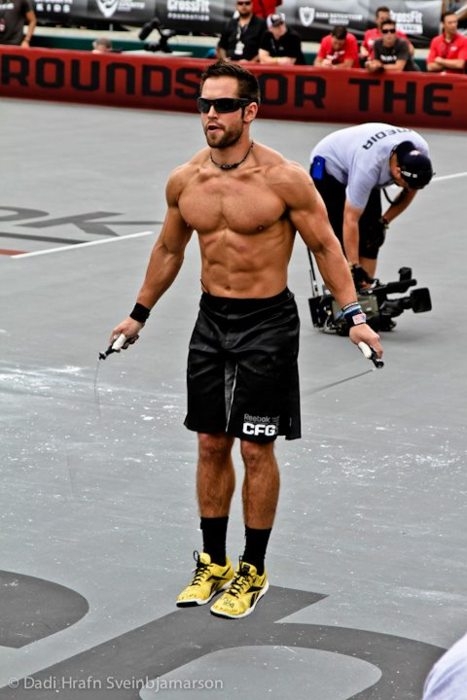
The CrossFit Experience
Two years ago, I wrote a piece for this website extolling the virtues of CrossFit – an “internationally-renowned strength and conditioning phenomenon” launched in 1995, which saw its popularity surge throughout the following decade. That original bit of research, skimming the history, components and merits of the fitness program, was my very first exposure to the CrossFit movement. Any prior knowledge and experience I had was limited to team sports and conventional, individual weight training.
CrossFit, truly, is less of a regimen than a lifestyle, establishing itself in tailor-made gyms around the world and, now, at least one Canadian university campus. Still, I can’t say that 1,000-word blurb drastically reshaped my approach to fitness – I continued to plod along in the gym, wavering between spurts of dedication and indifference, with nowhere to pursue serious CrossFit training in Ottawa or, after moving away for university, Kingston. Beyond a few articles and cheesy testimonials, I also couldn’t verify whether CrossFit was a viable fitness solution or a fad with minimal staying potential.
Somewhat serendipitously (and well after I’d forgotten about CrossFit ever existing), I was reintroduced to the program this past February as part of my work with the sports section of the Queen’s Journal. A few enthusiastic students had started an unofficial CrossFit club on campus – the first of its kind in Canada – and immediately attracted an immense cult following. I was set to go through an individual WOD (workout of the day, in CrossFit parlance) and document my inevitable struggle for the newspaper.
The story that ran was less workout diary and more hard news, detailing the power struggle between the organizers and Queen’s Athletics and Recreation, which used a series of vague objections to CrossFit to conceal their financial motives and prevent the group from assembling. Mercifully, the saga was resolved in May, when CrossFit Tricolour was ratified as an official university club. Despite the mass dispersal of students from Kingston in the summer, preliminary workouts have attracted a steady flow of participants from those that remain. The allure of the WOD is real, as daunting as it initially seems.
I learned that first-hand that day in February. After going through the requisite warm-ups and determining that my deadlift technique was up to par, we engaged in the WOD: 10 dumbbell squat presses, followed by five burpees and leaps over a bench, repeated as many times as possible in 15 minutes. To put it simply, I got destroyed, completing 12 rounds and immediately crumpling to the gym floor. The final half of the workout was spent gasping for air between lifts, buying as much rest time as possible and cursing the directions and encouragement of my instructors.
Naturally, I was hooked. Lifting a series of heavy things for a few hours each week (mixed in with casual games of pick-up basketball and squash), as had been my moderately successful routine for the past couple years, would no longer suffice. One CrossFit WOD had engaged and dismantled my entire body, but more importantly, it reshaped my mental conception of what fitness can and should be.
So in groups of five and 10 and 20, and surely dozens more during the school year, we press, pull, jump, sprint, throw, plank, lift and squat (and squat, and squat some more. After that’s all done, we squat). The skill work and WOD change each session; various movements and exercises are combined to target overall speed, strength, endurance, precision, flexibility and more. As a regular individual with recreational athletic ambitions and a goal of staying healthy, CrossFit allows you to refine your strengths and identify weaknesses you never would have considered.
There have been some missteps, particularly when we resuscitated movements I hadn’t attempted since childhood. I nearly dislocated my shoulder coming down from a handstand, tripped myself up countless times with a jump rope and learned that the head isn’t the proper takeoff point for a somersault. Mastering the fundamental motions of each is still very much a work in progress, but it’s a step up from the conventional gym rat approach, which would dismiss such maneuvers as playground nonsense. The core tenets of CrossFit – really, the basis of many athletic movements – say otherwise.
Just as the original OLM post noted that CrossFit doesn’t have the same historical resonance as something like the invention of basketball, Queen’s recreational movement doesn’t carry the same significance at the school as competitive varsity sports. That’s not CrossFit’s aim, of course, nor that of its many devotees and advocates – engaging the common student is the main priority, though athletes and physical freaks are also encouraged to partake.
For those of us who drifted away from competitive sports after high school, it’s a way of recapturing past glory. Grinding away in a dim, sweaty gym is a far cry from the CrossFit Games, but that’s where the purity of athletic striving resides: the start. With music thumping during warm-ups or the final seconds of lead-up to a WOD ticking down, anticipation peaks, and you feel like you’re part of something big. Maybe that’s what CrossFit does best: setting up an individual pursuit where you’re never alone.














